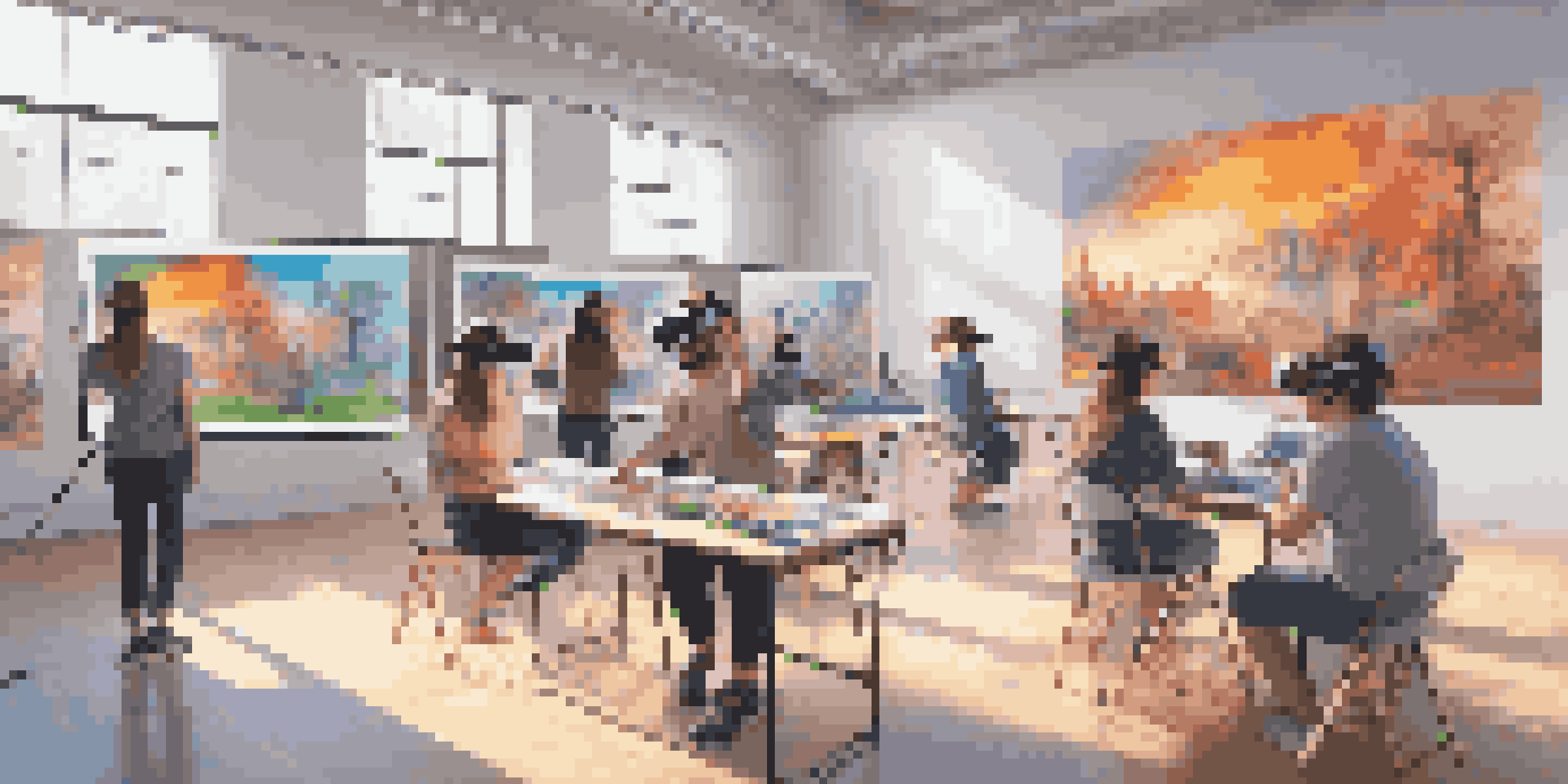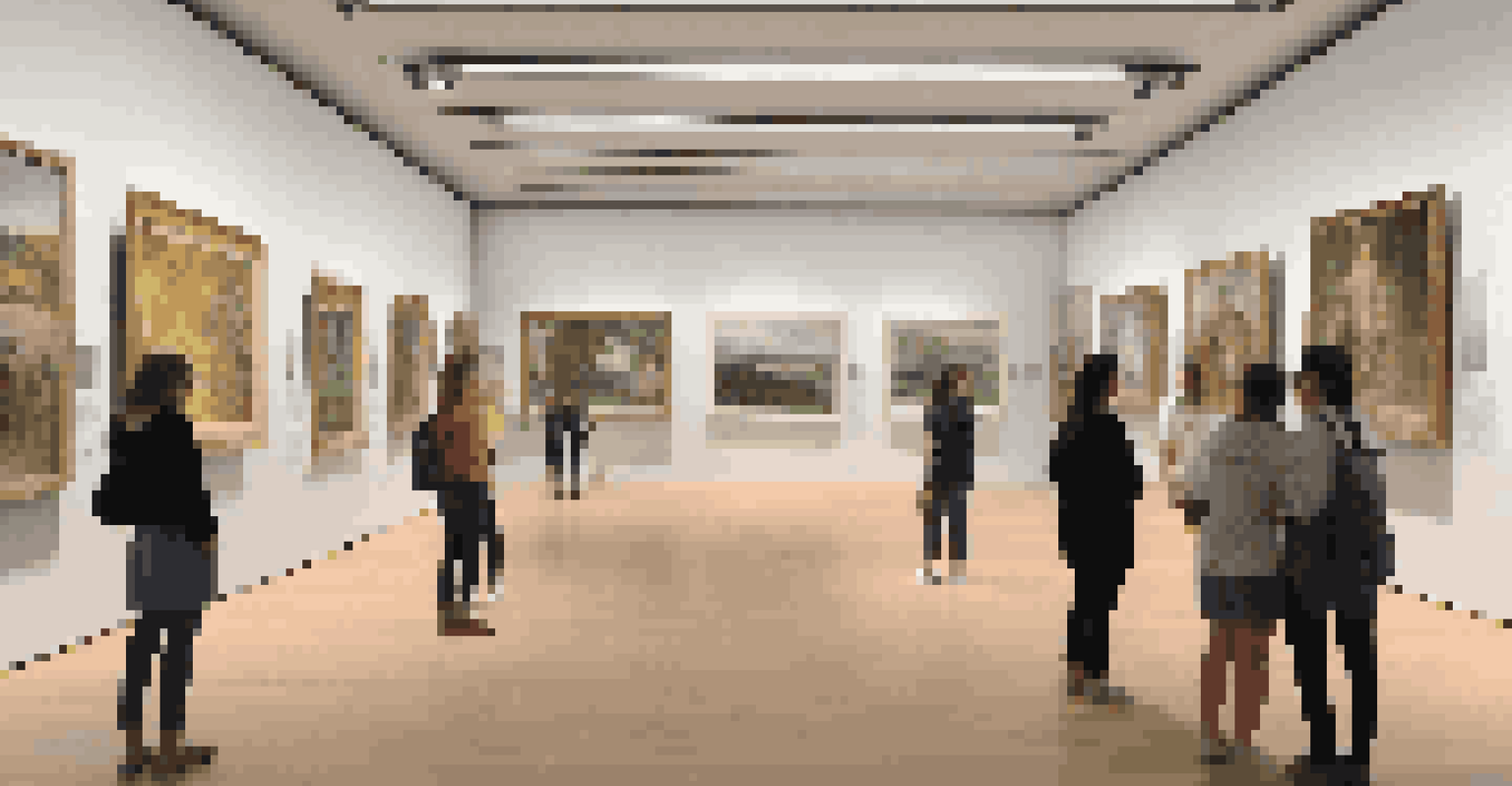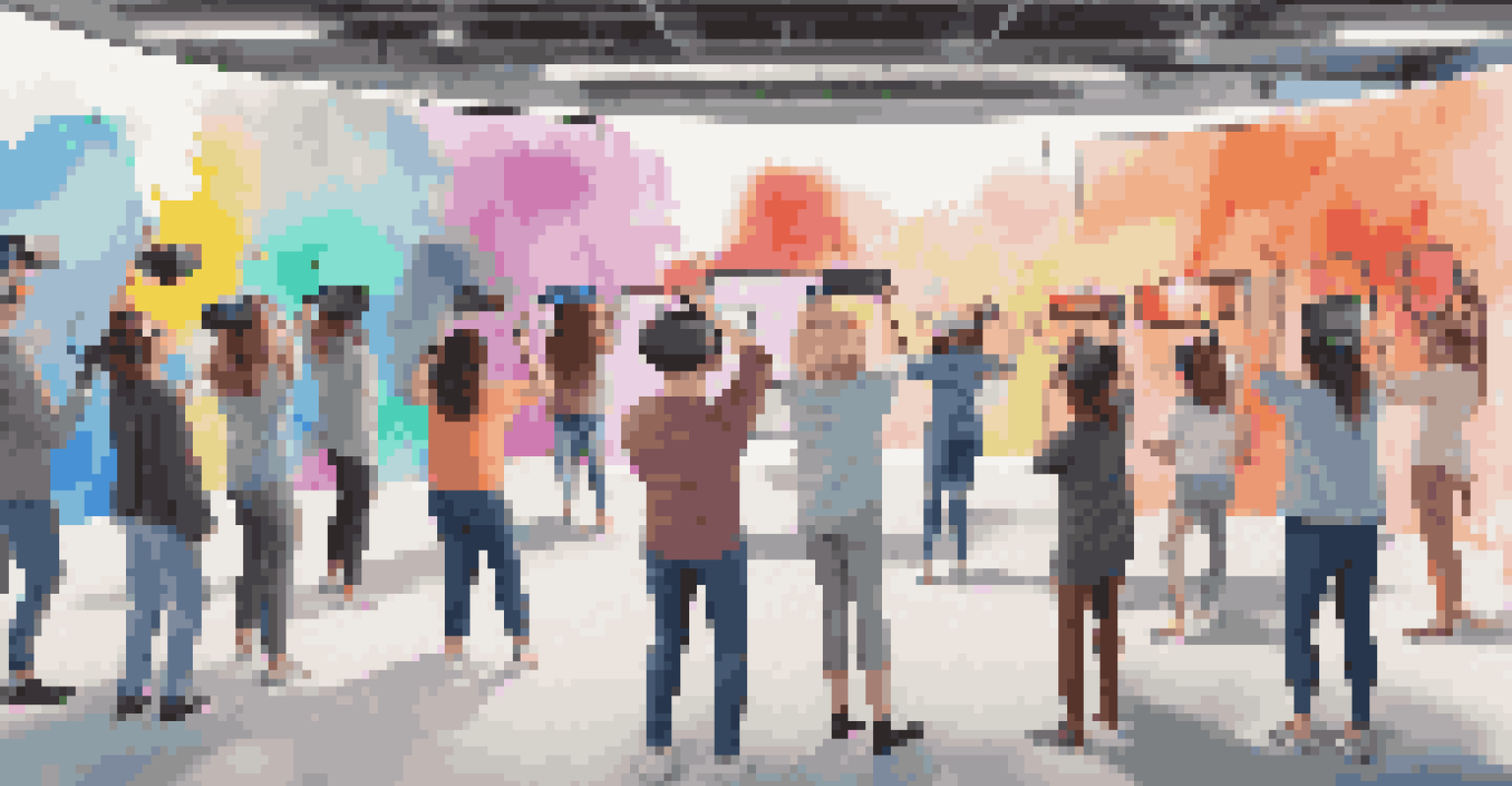Virtual Reality and the Future of Art Education: A New Approach

Understanding Virtual Reality in Art Education
Virtual reality (VR) is a technology that creates immersive experiences, allowing users to interact with a 3D environment. In art education, this means students can step into virtual galleries or even create art within a digital space. By simulating real-world scenarios, VR can help learners grasp complex concepts in a hands-on manner, bridging the gap between theory and practice.
Virtual reality is the ultimate empathy machine.
Imagine walking through a famous museum while sitting at home—this is the allure of VR. Students can explore renowned artworks, gaining insights into techniques and styles used by master artists. This interactive learning experience can ignite a passion for art and encourage deeper understanding, making art education accessible to everyone, regardless of their physical location.
Moreover, VR offers a safe space for experimentation. Students can try different mediums or techniques without the fear of making a mess or wasting materials. This freedom to explore and innovate fosters creativity, as students can push boundaries and develop their unique artistic voices.
Benefits of VR for Art Students
The use of VR in art education presents numerous benefits that traditional methods may not offer. Firstly, it enhances engagement; immersive experiences capture attention and stimulate curiosity. When students are actively involved in their learning journey, they are more likely to retain information and appreciate the nuances of art.

Additionally, VR can cater to various learning styles. Visual learners can benefit from 3D visualizations, while kinesthetic learners can interact with virtual tools and materials. This personalized approach ensures that each student can learn in a way that suits them best, making art education more inclusive.
VR Enhances Art Education Engagement
Virtual reality creates immersive experiences that captivate students and deepen their appreciation for art.
Furthermore, VR encourages collaboration among students. Virtual platforms can host group projects where learners can co-create art pieces, share feedback, and inspire one another. This sense of community enriches the educational experience, fostering teamwork and communication skills crucial for any artist.
Challenges in Integrating VR into Art Education
While the potential of VR in art education is exciting, there are challenges to consider. One significant hurdle is the cost of technology. High-quality VR headsets and software can be expensive, making it difficult for some institutions to adopt these tools. As a result, access may be limited to well-funded programs, creating disparities in art education.
The more we immerse ourselves in art, the more we understand the world around us.
Another challenge is the learning curve associated with using VR technology. Instructors may need training to effectively integrate VR into their curriculum. Without proper guidance, the technology can become overwhelming for both teachers and students, hindering its intended benefits.
Lastly, there are concerns about screen time and its impact on students' health. While VR can provide enriching experiences, it's essential to balance virtual interactions with real-world engagement. Encouraging students to create art with traditional materials, alongside their VR experiences, can help maintain this balance.
Case Studies: Successful VR Art Programs
Several educational institutions have successfully integrated VR into their art programs, showcasing its potential. For instance, the University of Illinois has developed a VR art studio where students can collaborate on projects in a virtual environment. This innovative approach not only enhances creativity but also prepares students for future careers in digital art and design.
Another notable example is the Art Institute of Chicago, which offers virtual tours and workshops that allow students to explore art history and techniques through VR. By engaging with the content in a dynamic way, students gain a deeper appreciation for artistic expression and the cultural significance of art.
Challenges in VR Adoption
The high cost of technology and the need for educator training present significant hurdles in integrating VR into art education.
These case studies demonstrate that when implemented thoughtfully, VR can transform the art education landscape. By providing students with unique opportunities to engage with art in new ways, these programs are paving the way for a more interactive and effective learning experience.
The Role of Educators in VR Art Education
Educators play a crucial role in the successful integration of VR into art education. Their enthusiasm and expertise can help guide students through this new medium, ensuring that learning objectives are met. By being open to exploring new technologies, teachers can inspire their students to embrace the possibilities that VR offers.
Furthermore, educators need to focus on creating a supportive learning environment where students feel comfortable sharing their ideas and experimenting with VR tools. Encouraging students to reflect on their experiences and discuss their artistic choices can foster a deeper understanding of the creative process.
Professional development opportunities for educators are also essential. Workshops, webinars, and collaborative projects can help teachers stay updated on the latest VR trends and best practices. This ongoing learning ensures that educators can effectively harness the power of VR to enrich their art programs.
Future Trends: VR in Art Education
As technology continues to evolve, the future of VR in art education looks promising. We can expect more affordable VR options to become available, making it easier for schools and institutions to adopt this innovative approach. As accessibility improves, we may see a surge in creative programs that utilize VR to engage students in new ways.
Additionally, advancements in VR technology will likely lead to even more immersive experiences. For example, incorporating haptic feedback could allow students to feel textures and materials as they create art in a virtual space. This sensory engagement could revolutionize how students connect with their artistic practice.
Future of VR in Art Education
As VR technology evolves, it promises to provide more affordable and immersive educational experiences, fostering global connections among students.
Finally, VR has the potential to foster global connections among art students. Virtual exchanges can enable learners to collaborate with peers from different cultures, broadening their perspectives and enriching their artistic journey. This interconnectedness can cultivate a sense of community that transcends geographical boundaries.
Conclusion: Embracing the Future of Art Education
In conclusion, virtual reality is poised to revolutionize art education by offering immersive, engaging experiences that traditional methods may lack. As we embrace this technology, we can enhance creativity, collaboration, and accessibility in art programs. While challenges exist, the potential benefits far outweigh the obstacles.
By integrating VR into art education, we are not just preparing students for careers in the arts; we are fostering a new generation of innovative thinkers and creators. As educators and institutions continue to explore this frontier, the future of art education will be more vibrant, diverse, and inclusive.

Ultimately, embracing virtual reality in art education is about more than just technology; it’s about inspiring students to explore their creativity and express themselves in ways they never thought possible. The journey into the world of VR is only just beginning, and the possibilities are limitless.